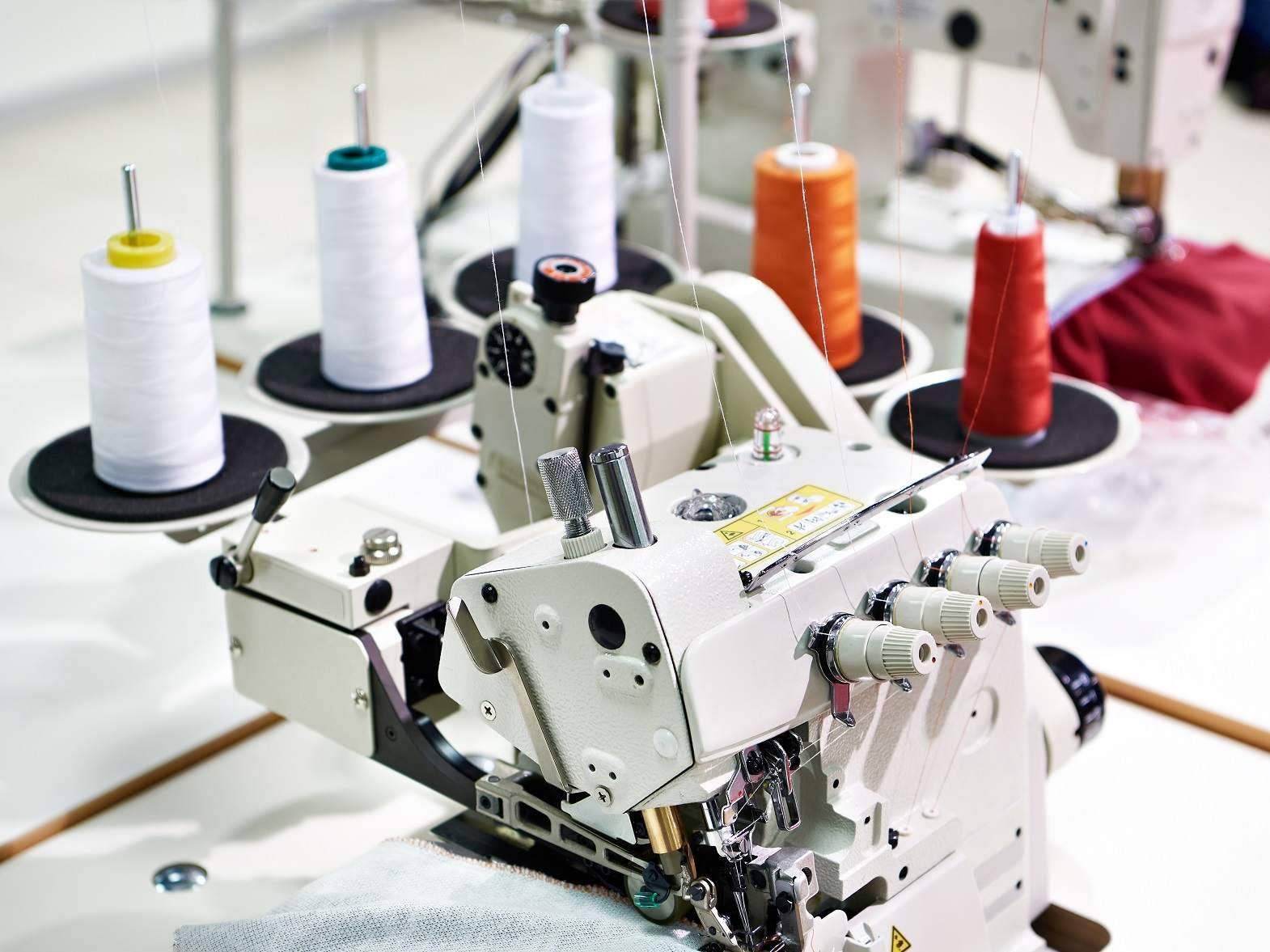Overlock, also known as "serging" or "serger stitch," can be formed with one to four threads, one or two needles, and one or two loopers. Overlock sewing machines are usually equipped with knives that trim or create the edge immediately in front of the stitch formation. Household and industrial overlock machines are commonly used for garment seams in knit or stretchy fabrics, for garment seams where the fabric is light enough that the seam does not need to be pressed open, and for protecting edges against raveling. Machines using two to four threads are most common, and frequently one machine can be configured for several varieties of overlock stitch. Overlock machines with five or more threads usually make both a chainstitch with one needle and one looper and an overlock stitch with the remaining needles and loopers. This combination is known as a "safety stitch." Household overlock machines are widely used.
Five-thread overlock machines are used to hem the raw edges of the fabric, ensuring the prevention of loose threads from the edges. The five-thread overlock machine is superior to the three-thread overlock machine because it has two needles and two loopers for a secure stitch.
The five-thread overlock yarn breakage detector is used to indicate and stop the machine immediately once the yarn breaks. This ensures good quality of the garment, and moreover, it makes it easier to identify the broken threads.
Read Full Article
About the Authors
The authors of the article are associated with PSG College of Arts & Science, Coimbatore.








Comments